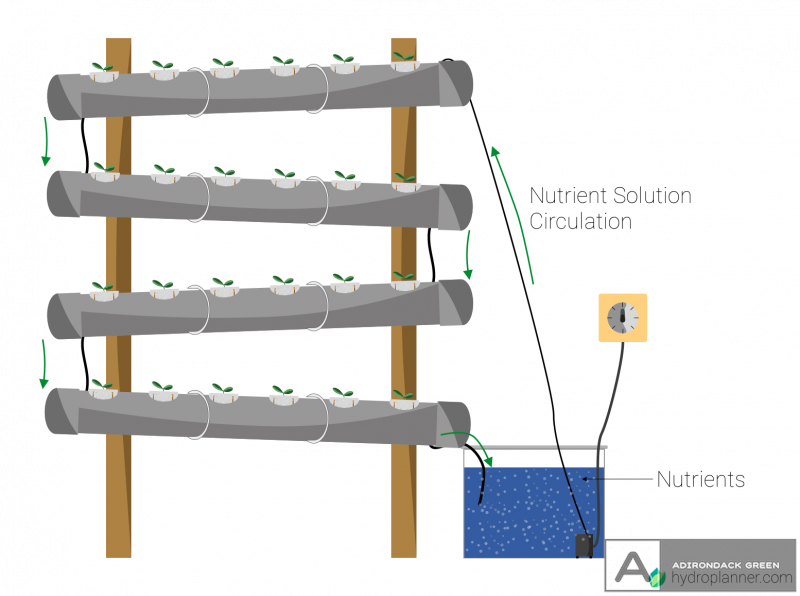This question came from a dinner party this past weekend when I mentioned using hydroponic nutrients to feed my potted cannabis plants.
>> Grow School: more info on growing cannabis in coco <<
Chels wanted to know "what the hell is potted hydroponics?!" -- actually she didn't say that, but I think that encapsulates the emotion, and I kind of like that term, ha.
So here's the skinny - "coco" or "coco coir" is one such "void" medium that does not contain any nutrients itself, but resembles the loose structure of soil. Plants grow through the medium like soil, but the grower is tasked with providing the right amount of nutrients and oxygen. It's not the only means though.
Potted Hydroponic Mediums
- Coco coir
- Clay Pebbles
- Rockwool
- Rocks gravel
Minerals vs Food (in plants)
First it's worth noting the terms "feeding" your plants is 100% wrong in all cases, plants make their own food. What we do as growers is provide minerals to the plants (along with sun) so that they can produce their own food (i.e. sucrose). I'll still say "feeding" but the distinction is important before we proceed. The minerals they need can be provided in different manners.
In a process the team has named the "rhizophagy cycle" (rhizophagy means root eating), bacteria and fungi cycle between a free-living phase in the soil and a plant-dependent phase within cells of plant roots. Microbes obtain nutrients (nitrogen and minerals) in soil, and nutrients are extracted from microbes in the cells of plant roots.
https://www.sciencedaily.com/releases/2018/09/180917111527.htm
Note: I have not seen any literature that suggests this is the sole manner, but rather one that compliments the traditionally understood model of basic osmosis/diffusion to pull in minerals, assisted by the roots manipulation of EC.
How Plants get Minerals from soil**
Soil is alive ! It's packed with microorganisms all cranking along 24/7. These characters interact to breakdown organic matter in the soil. So when you add FooP, or worm castings or any matter like that to soil, it is useless to plants until our soil ecosystem begins to break it down into the basic minerals, which can be used by plants as describe above.
- This process takes time, meaning changes to inputs take time to realize in the plants.
- the benefit is they can also buffer sudden swings in feeding (too much/too little)
- While not delicate per se, it can certainly go awry if the balance is upset.
How plants get minerals from hydroponics.
Contrary to soil - hydroponic mediums are intentionally inert and devoid of life. They have no nutrients themselves, and instead allow (and require) the grower to provide directly. Because we have no army of critters these nutrients must be in the form and ratio of minerals we want available to the plant.
- The inputs are immediately available to the plants, making adjustments easier
- Providing exact balance of minerals is critical, there is no living buffer to smooth out spikes/lows
How it works
There are probably hundreds of implementations, but generally I know of 3 manners that potted hydroponics are applied.
- Drain-to-Waste - My least favorite method, but "dummy proof". Scheduled feeders gived fixed amounts of fertigation (water mineral mix) to the plants calculated to be a known excess of their needs. The overfeeding will push out usually 10% extra ensuring the medium is at current desired ratios.

- Recirculated - Addressing the wasteful nature of above, recirculating systems have 2 sub-categories. Changing ratios usually still means dumping and changing a reservoir of feed.
a. Immersed - this to me is the more classic method, baskets of medium are immersed in a flowing river of feed, usually in long pipes that is pumped and circulated.

b. Drip / flood - Potted mediums are flushed at regular interval, similar to DtW above, but the run-off is captured in trays that feed back into the reservoir to be pumped out again.

- Self fed / wicking / capillary feeding / autopot - My personal favorite because there is essentially 0 waste. The plants will absorb fertigation from a wick or basin. Unlike top feeding, these rely on capillary action, where the medium pulls water to a point of saturation, without overwatering. This method is not viable for larger granules like clay pebbles and gravel, only rockwool and coco.

Bonus: Why Coco Coir Eddie?
Sustainability. Rockwool can't be reused and is a one-way destructive process solely for cultivation. Coco-coir on the other hand is waste already - a bi-product from Coconut farming. Additionally you can wash & reuse coco coir multiple times.

Ready to get started with Cannabis in Coco?
Grow School: more info on growing cannabis in coco